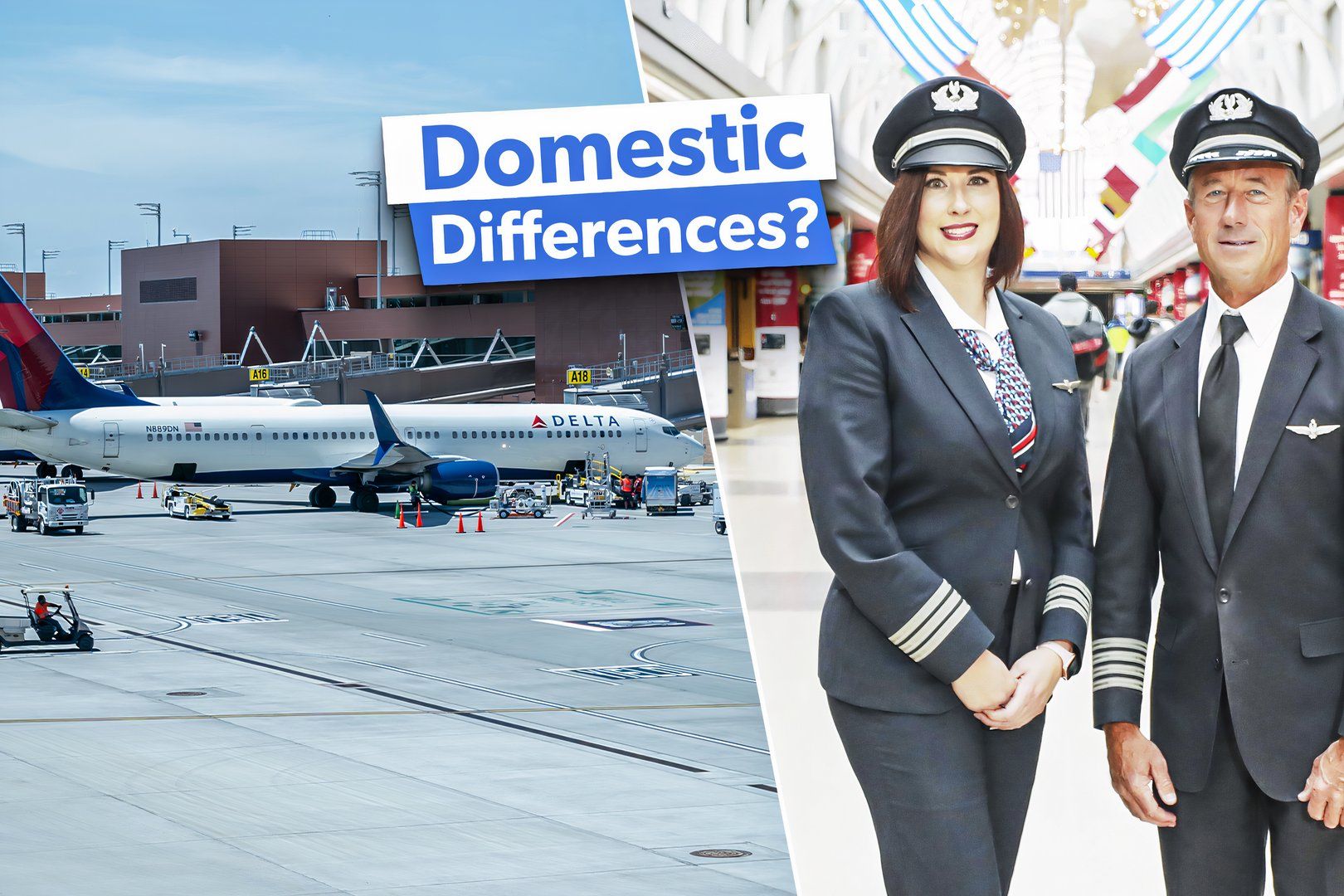Summary US narrowbody pilots mainly fly domestically, but international flying is typical for regional and mainline pilots alike. Many international flights from the US are short-haul continental flights to countries in the Americas. All airline pilots can fly internationally.
Arrival back in the US usually requires customs clearance. Flying internationally is less common for US pilots than for pilots in other parts of the world. However, international flying is still rather commonplace for regional and mainline pilots alike.

This article will identify some of the differences between international and domestic flying for US pilots and the additional considerations that crews make when flying out of the country. Perspectives on international flying International flying seems to be commonly associated with intercontinental flying in the US. Compared to Europe and other parts of the world, the US is significantly more vast, with countless domestic destinations, likely contributing to this perception.
The reality is that many international flights into and out of the US are continental flights serving Canada, Mexico, or the Caribbean. Another large swath of international flights are short-haul journeys to Central America or the northern parts of South America. International trips can be quick turnaround flights where the crew flies to a destination, stays on the plane, and then continues back to the US.
This usually doesn't require the flight attendants or pilots to transit any security, customs, or immigration since they technically are not entering the country they've flown to. This kind of turn closely resembles a domestic out-and-back. The only real difference is when the crew arrives back in the US.
Re-entry almost always requires parking at an international gate and clearing US customs since the crew is viewed by the US government as having left and re-entered the country. Seniority and preferences Another perception about international flying that is often skewed is the experience level needed to fly internationally. In reality, every airline pilot is qualified to fly internationally if the airline they work for does so.
A brand-new pilot on reserve at a regional airline can be called to work a trip to Mexico, the Caribbean, Canada, or any other country the airline operates in. Likewise, a pilot with a set schedule can constantly be re-routed to work for an international flight. Airlines require flight attendants and pilots to consistently report to work with a passport.
There's always an outside chance that a domestic trip turns into an international one. A few things might restrict pilots from flying to certain countries. The first is if there are required qualifications to fly to a particular airport.
A pilot can rule out a destination if they do not have the qualifications (usually, this is just some additional training). Another limiting factor is a self-imposed stricture on particular destinations. irlines typically allow pilots to opt out of destinations if they are at a higher risk.
For example, a pilot can indicate they do not want to operate to destinations where Malaria or certain other diseases are more common. Crew scheduling would know not to use a pilot for an opening to a destination designated as a Malaria risk. Maintaining situational awareness An additional point of note for US pilots who primarily fly domestically is to remember the responsibilities and obligations of foreign air traffic controllers .
US air traffic controllers have a high burden for terrain and traffic separation in domestic airspace. Pilots who primarily fly in the US become accustomed to this, and it's easy to forget that controllers in different countries have varying standards. Airline training departments teach the importance of honoring minimum altitudes and continuously cross-checking the flight's position with terrain, especially in Mexico, Central, and South America.
This challenge is perhaps the most unique element of international flying for US pilots compared to those from the rest of the world. A narrowbody-US pilot could go months—maybe even years—without flying outside US airspace due to its vastness and the breadth of the domestic market. This isn't possible for narrowbody pilots from many other countries who primarily conduct international flights on every trip.
US pilots assigned to fly south of the border pay close attention to the company-provided briefing pages and notes on their destination, studying en-route charts and practicing proper radio phraseology. Report time Another element of international flying that differs from domestic flying is the briefing time needed before the flight. The required report time varies by airline—some companies always require their pilots to meet in a briefing room, while others allow their crews to meet at the gate (this is most often the case on domestic trips).
Before an oceanic trip, pilots must generally meet in a briefing room about 90 minutes before departure to review the flight plan (which becomes available around this time). This is an essential wrinkle because an earlier report time is factored into a pilot's duty time for flight time, rest, and compensation. This usually isn't a problem since international long-hauls that require an earlier show-time feature 3-4 pilots and are only a single leg.
Pilots must walk off duty if they fear going over the daily limit. International flying is a broad topic. Generally, it accounts for everything from a 40-minute flight from Miami to Freeport to a 15-hour journey from Los Angeles to Sydney.
The most significant difference between flying domestic and international trips is understanding a country's ATC procedures and customs policies. Outside of this, the airlines want their pilots to fly the same in international airspace as in domestic US airspace, rules allowing. Formalities aside, international flying is pretty straightforward and shares plenty of commonality with domestic US flying.
.



















